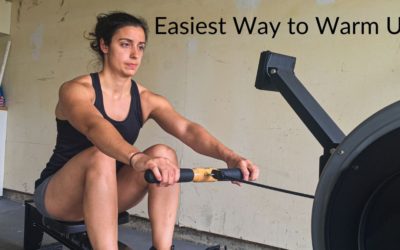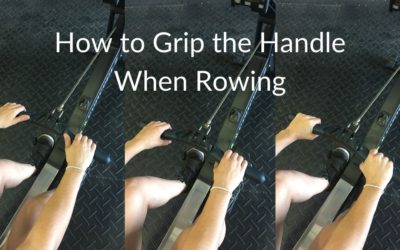Can I Stay Home and Stay Fit?
It’s a strange time for everyone in the fitness world. In a matter of days, most of us went from having a gym full of equipment to quarantined in our house for 14 days (or more) to avoid spreading COVID-19. I’ve seen many worries on social media pertaining mostly to finding toilet paper, but I’ve also seen countless people asking what they can do to stay in shape at home.
We have all worked so hard to be in shape, and we don’t want to lose what we’ve worked so hard to have.
I want to address what some people may be worried about. Will working out at home for 3-4 weeks (or maybe longer) detrimentally affect my level of fitness? Will I be able to maintain what I can do when my gym reopens?
I am hoping to ease your worries, and reassure you that your fitness will be there when you get back into the gym. I’ll address how long it takes to lose muscle, some best overall practices to maintain your fitness level, and what to expect when you get back into the gym.
HOW LONG UNTIL YOU LOSE MUSCLE
Let’s talk about an extreme muscle loss situation to put things into perspective.
When you injure yourself to the point of inactivity, you won’t use the muscles in that area for multiple weeks. I’m talking about injuries that result in broken bones and/or surgery. This is the type of inactivity where you can’t use that leg/arm/shoulder (you name it) for quite some time. In these circumstances, muscle strength fades after 2 weeks on inactivity (*M.E.Dallas, 2015)
Most of us who are quarantined in our homes are still moving around, cleaning, chasing kids, and working out at home. This already sets you up to be in a much better position to maintain your fitness. If it takes two weeks of complete inactivity to lose muscle strength, it would take two weeks of sitting on the couch doing absolutely nothing for you to start to lose muscle strength. And this wouldn’t be nearly as much as someone who, let’s say, couldn’t walk after a knee surgery.
In fact, most athletes can take about 3 weeks off without losing much muscle strength or muscle mass (*D.McMaster, 2013;*R.Ogasawara, T.Yasuda, N.Ishii, 2013) If you’re reading this and you workout on a consistent basis, I consider you an athlete. There’s no law saying you need to workout 5 hours a day to be considered one.
After about 3-4 weeks, you may start to lose some muscle strength. This will depend on your situation:
Fully stocked home gym → You won’t have muscle loss since you are able to continue your training as normal.
Limited Equipment (ex: dumbbells), but no barbell → You are able to do home workouts, but won’t be able to lift heavy. You may lose some strength in regards to your 1RM, but don’t worry. Training at home like this 3x per week can maintain strength over a period of 8-12 weeks, assuming you keep the same intensity (*A.Tzur, 2017).
No equipment → You will be limited to bodyweight workouts. It is still possible to maintain a high-intensity workout while only using your body. Your body may become accustomed to bodyweight exercises while in quarantine, but once you return your body can get back to its peak fitness levels lifting weights soon after (*J.C.Bruusgard, I.B.Johansen, I.M.Egner, Z.A.Rana, K.Gundersen, 2010).
There are other ways you can maintain your fitness level while in quarantine that isn’t about working out.
BEST PRACTICES FOR MAINTAINING FITNESS
- Eat enough protein – Aiming for 0.8 g of protein per kg of body mass will help you maintain muscle (*P.Rogers, 2020).
- Eat enough in general! – The last thing you want to do is go on a crash diet and eat way less in order to compensate for not being able to lift heavy. If you don’t eat enough to maintain your body weight, you WILL lose muscle and thus strength (*P.Rogers, 2020).
- Get enough sleep – Sleep is when your body rebuilds itself (*P.Rogers, 2020). When you get an inadequate amount of sleep, your body needs more energy for the longer period of time you are awake. Your hunger will rise slightly to accomplish this, but most of the time we will eat too much, over satisfying this extra energy need, which results in weight gain (*R.R.Markwald, E.L.Melanson, M.R.Smith, J.Higgins, L.Perreault, R.H.Eckel, K.P.Wright Jr., 2013). Sleep also helps up with our mood, which will give us a better outlook on our situation.
- Keep training – Do what you can. Even if you can only do bodyweight exercises, do your best to keep up the intensity your body was used to before quarantine.
- Limit alcohol intake – As much as this situation makes you want to sit down and have a couple of beers, it’s better for you to limit it to one beer or better yet none at all. Drinking alcohol raises your estrogen levels, decreasing testosterone which negatively affects your ability to maintain muscle (*P.Rogers, 2020).
GYM LIFE AFTER QUARANTINE
You may lose some muscle strength, mass, or endurance while quarantined in your house, but I have good news for you.
Our muscles are smart. They do this thing called muscle memory. Most of us know muscle memory as doing the same motion over and over again, but our muscles also remember how strong we used to be.
This means that even if you do lose muscle mass or strength while being away from the gym, it won’t take as long to get it back! Take a read at this quote from a study:
During 30–32 wk of detraining, a group of women lost a considerable part of the extra strength obtained by 20 wk of previous training but regained the strength after only 6 wk of retraining. (*J.C.Bruusgard, I.B.Johansen, I.M.Egner, Z.A.Rana, K.Gundersen, 2010)
Isn’t that great?! I don’t know about you, but that makes me feel a lot better. If I continue to train and do what I can at home, this period of detraining won’t detrimentally affect my overall strength levels. Keeping up with the intensity of my workouts will help maintain my endurance as well.
Final answer… YES! You can stay home and stay fit.
The Easiest Way to Warm up for a Rowing Workout
You know you wanted to do a rowing workout today, but how should you warm up for it? I suggest doing this simple 10 minute warm up…
How to Grip the Handle When Rowing
Something as little as how you grip the handle can change more than you think about your rowing stroke.


